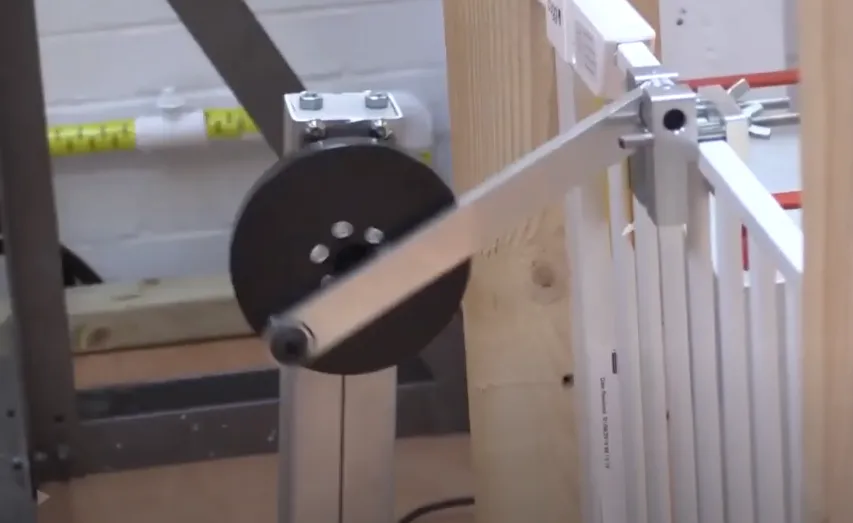ISO 16000-9 Indoor Air VOC Emission Testing for Children’s Furniture Materials
The demand for safer and healthier indoor environments has led to stringent regulations regarding volatile organic compound (VOC) emissions in various sectors, including children's furniture. ISO 16000-9 provides a standardized method for testing the emission of VOCs from materials used in children’s furniture. This service ensures that manufacturers can meet regulatory requirements while safeguarding children's health and well-being.
The test procedure outlined in ISO 16000-9 involves placing specimens of material under controlled conditions to simulate real-world use scenarios. The goal is to quantify the emissions of VOCs, which include a wide range of chemicals such as formaldehyde, benzene, and other potentially harmful substances that can be released into indoor air.
Understanding the implications of this testing for different stakeholders is crucial:
- Quality Managers: This test helps in ensuring product compliance with international standards, thereby protecting brand reputation and maintaining customer trust.
- Compliance Officers: It ensures that manufacturers are adhering to legal and regulatory requirements set by governing bodies like the European Union or other national authorities.
- R&D Engineers: This service provides insights into material selection, formulation optimization, and process improvements for reducing emissions without compromising on performance.
- Procurement Officers: By verifying compliance with ISO standards, they can ensure that suppliers deliver materials meeting the highest safety and quality benchmarks.
The testing procedure involves specific steps designed to mimic actual use conditions. Specimens are placed in a climate-controlled chamber where temperature, humidity, and air flow are precisely controlled to simulate real-world environmental factors. The emissions of VOCs are then measured over time using sensitive analytical instruments such as gas chromatography-mass spectrometry (GC-MS).
Accurate measurement is critical for ensuring reliable data. Factors like the type of material being tested, its thickness, and surface area can influence the rate of emission. Therefore, careful specimen preparation is essential. This includes cutting samples to standardized dimensions and ensuring they are free from contamination.
The results of this testing provide valuable information not only for regulatory compliance but also for improving product design and manufacturing processes. By identifying potential sources of VOC emissions early in the development stage, manufacturers can implement corrective actions that enhance both indoor air quality and product safety.
For customers, this service ensures peace of mind knowing that they are purchasing products that meet rigorous international standards designed to protect health and well-being. This is particularly important for children's furniture where prolonged exposure poses higher risks due to the sensitive nature of young bodies.
Applied Standards
| Standard Number | Description |
|---|---|
| ISO 16000-9 | Method for Determining Volatile Organic Compound (VOC) Emissions from Materials by Adsorbent Tube Sampling and Thermal Desorption/Gas Chromatography-Mass Spectrometry Analysis. |
| ASTM D5831 | Determination of VOCs from Building Materials Using Thermal Desorption/Gas Chromatography-Mass Spectrometry. |
| EN 16000-9 | Method for Determining Volatile Organic Compound (VOC) Emissions from Materials by Adsorbent Tube Sampling and Thermal Desorption/Gas Chromatography-Mass Spectrometry Analysis. |
The application of these standards is crucial as they provide a consistent and reliable method for measuring VOC emissions, ensuring that the results are comparable across different laboratories and jurisdictions. This harmonization is particularly important in an industry where compliance with international standards can significantly impact market access and consumer trust.
By adhering to ISO 16000-9 and related standards, manufacturers ensure their products meet stringent quality and safety criteria. This not only enhances the reputation of the brand but also helps in maintaining a competitive edge in the global market. Additionally, compliance with these standards can help avoid costly recalls or legal actions.
Industry Applications
The application of ISO 16000-9 testing is widespread across various sectors where indoor air quality and VOC emissions are critical considerations. Some key industries include:
- Furniture Manufacturing: Ensuring that materials used in children’s furniture do not contribute to harmful VOC emissions.
- Home Furnishings: Providing safe and healthy living environments, especially for young children who spend significant time at home.
- Schools and Educational Institutions: Creating safer spaces where children can learn without exposure to toxic chemicals.
- Hospitality Sector: Enhancing the health and comfort of guests by ensuring that furniture used in hotels, motels, and resorts meets high safety standards.
The results of this testing are not only beneficial for manufacturers but also for end-users. By selecting products that have undergone ISO 16000-9 compliant testing, consumers can be assured that they are contributing to a healthier home environment. This is particularly important in the context of children's furniture where prolonged exposure poses higher risks.
The industry-wide acceptance and adoption of these standards reflect a commitment to public health and safety. As society places increasing emphasis on sustainability and environmental responsibility, the demand for products that meet rigorous international standards continues to grow.
Quality and Reliability Assurance
- Consistent Test Results: The standardized procedures ensure consistent results across different testing facilities, enhancing reliability and trust in the process.
- Compliance Verification: This service helps manufacturers verify compliance with international standards, ensuring legal adherence and avoiding potential penalties.
- Customer Trust: By providing proof of compliance with ISO 16000-9 standards, manufacturers can build stronger relationships with customers who value high-quality products.
- Process Improvement: The insights gained from this testing can lead to continuous improvement in manufacturing processes and material selection.
- Risk Management: Early identification of potential issues related to VOC emissions helps mitigate risks associated with non-compliance or product failures.
The reliability and consistency provided by ISO 16000-9 testing are essential for maintaining high standards in the furniture manufacturing industry. By adhering to these standards, manufacturers can ensure that their products meet the highest safety and quality benchmarks. This not only enhances brand reputation but also helps in maintaining a competitive edge in the market.
The process of ensuring compliance with ISO 16000-9 testing involves meticulous specimen preparation, precise measurement techniques, and adherence to standardized procedures. The use of advanced analytical instruments ensures accurate and reliable results, which are crucial for making informed decisions regarding product design and manufacturing processes.





